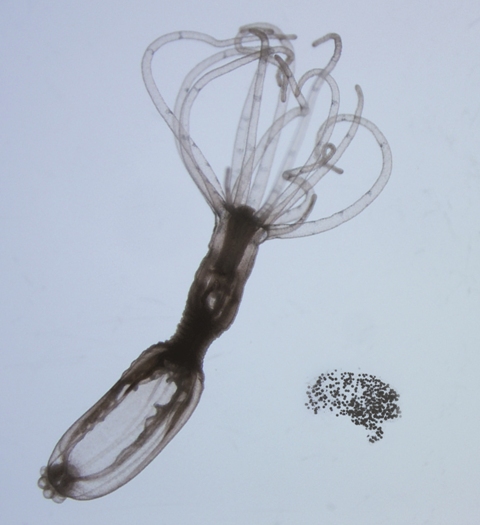Researcher :Dr. Tamar Lotan
Background
Cnidaria is one of the most ancient multicellular phyla, having evolved 700 million years ago. The phylum, which includes organisms such as jellyfish, sea anemones, corals and hydra, is considered a sister group to the Bilateria. Cnidarians are commonly characterized by a single body axis, only two germ layers, namely ectoderm and endoderm, and unique highly complex stinging capsules. In addition to their morphological simplicity, cnidarians have a high level of developmental plasticity that equips them for shape transformation, regeneration and asexual proliferation during their life cycle. Cnidarians are also key players in the marine ecosystem, acting as reef structure builders and as both predators and prey.
The unique characteristics found in Cnidarians, together with their basal position in the evolutionary tree, make the cnidarians an important group for studies of basic developmental and evolutionary processes, as well as of environmental adaptations.
Unique Characteristics of Cnidarians Enabling Diverse Applied Research
Dr. Tamar Lotan is head of the Cnidarians Developmental Biology and Molecular Ecology Lab at the University of Haifa, pursuing research for a range of molecular, environmental, and pharmaceutical applications.
Molecular Development Programming
Study of biochemical pathways and genetic programs in the process of primordial germ cells (PGCs) maturing to early stages of embryogenesis. This research is shedding light on a basic understanding of the initial stages of animal production.
Approaching Marine Pollution
The research team is developing monitoring methods for marine contamination, such as heavy metals, based on defense mechanisms against contaminants that are found in cnidarians.
Advancing Drug Injection Capabilities
Cnidarian stinging cells, microscopic cyst capsules loaded with an array of toxins, reveals that they have the ability to inject and release the liquid substances at a pressure of 150 bars within a split second. Dr. Lotan’s laboratory conducts biological and engineering research to understand the morphological structures of the nanometric cnidarian syringe, as well as its pressure and flow mechanisms for potential drug delivery solutions.
Related pages
Tamar Lotan, Dr. - researcher page


